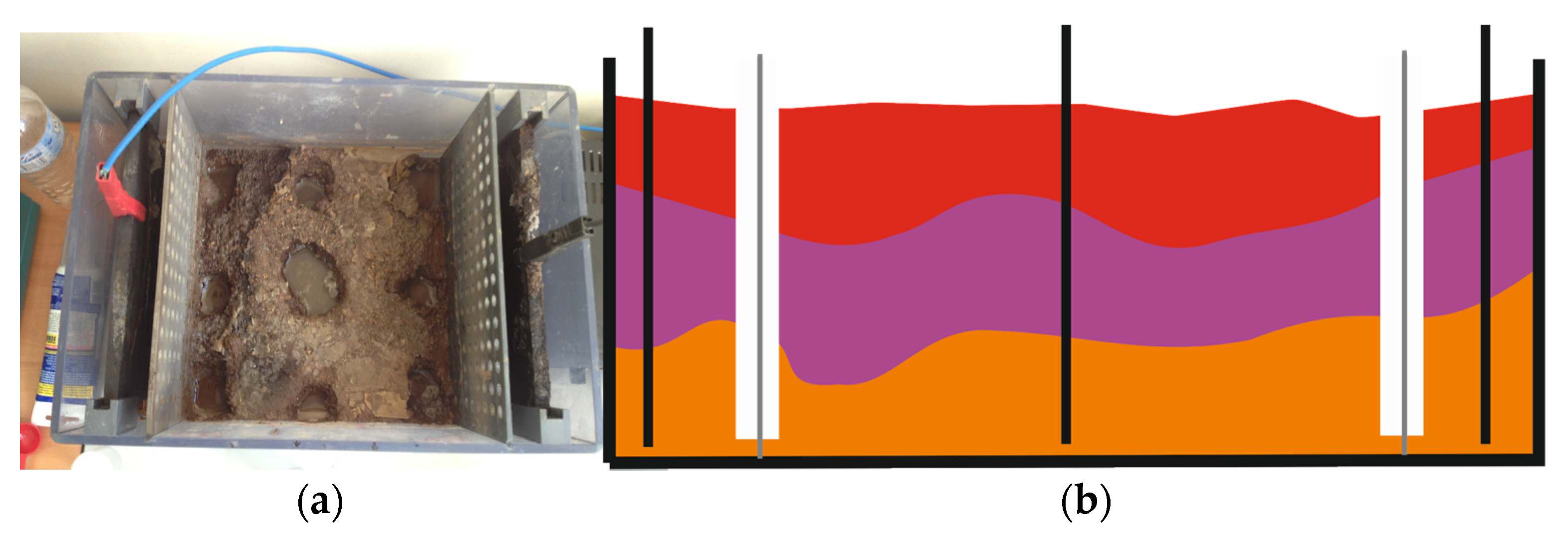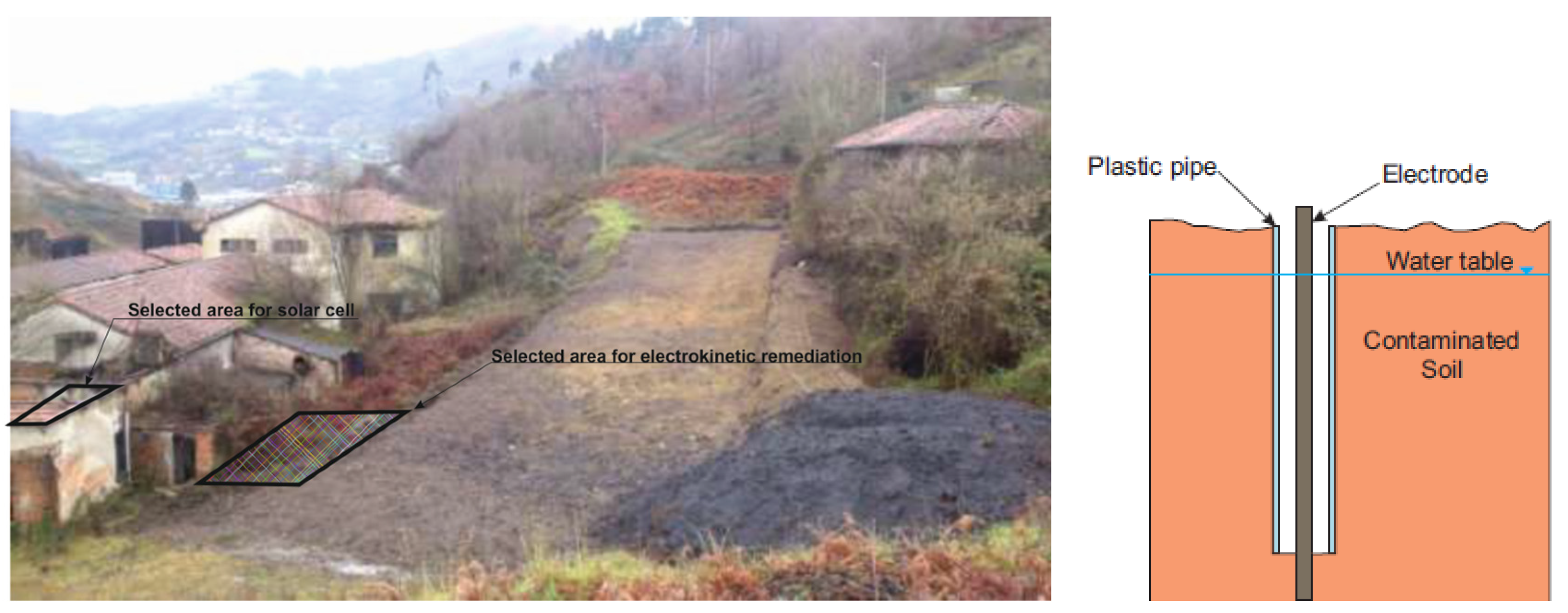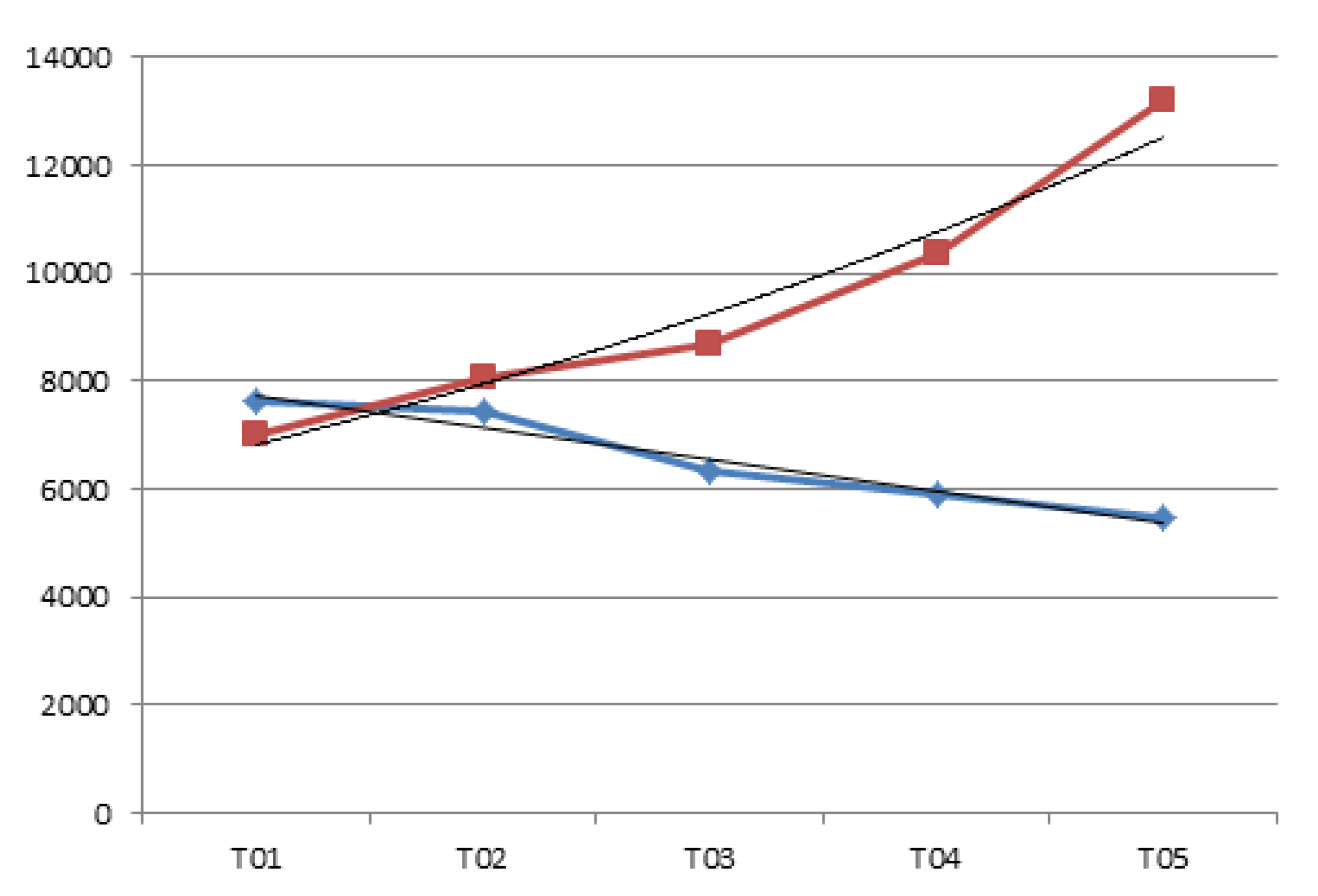Induced Mobilization of as Contained in Metallurgical Waste Using Electrokinetic Remediation Technology: Environmental Implications and Technical Limitations in soil Remediation of Orphan Mining Areas †
Abstract
:1. Introduction
2. Objectives and Methodology
3. Results
4. Conclusions
References
- Silva, V. Incidencia de la Minería Abandonada de Mercurio Sobre las Aguas y Sedimentos de la Cuenca del río Caudal: Valoración y Propuestas de Actuación. Ph.D. Thesis, Oviedo University, Oviedo, Spain, 2011. [Google Scholar]
- Fernández-Canteli, P.; Baldo, C.; Ordóñez, A.; Loredo, J. Experiencias electrocinéticas aplicadas a la descontaminación de suelos con arsénico. In Proceedings of the III Congreso Ibérico de Geoquímica, Zaragoza, Spain, 23–26 October 2001; pp. 485–490. [Google Scholar]
- González Arenales, M.; Loredo, J.; García Iglesias, J. La electrocinética aplicada a la descontaminación de suelos. Estudios experimentales. In Proceedings of the X Congr. Internacional Minería y Metalurgia, Valencia, Spain, 1–5 June 1998; pp. 319–332. [Google Scholar]





Publisher’s Note: MDPI stays neutral with regard to jurisdictional claims in published maps and institutional affiliations. |
© 2018 by the authors. Licensee MDPI, Basel, Switzerland. This article is an open access article distributed under the terms and conditions of the Creative Commons Attribution (CC BY) license (https://creativecommons.org/licenses/by/4.0/).
Share and Cite
Sierra, A.L.M.; P., C.; R., Á.; A., O.; N., R.; J., L. Induced Mobilization of as Contained in Metallurgical Waste Using Electrokinetic Remediation Technology: Environmental Implications and Technical Limitations in soil Remediation of Orphan Mining Areas. Proceedings 2018, 2, 1412. https://doi.org/10.3390/proceedings2231412
Sierra ALM, P. C, R. Á, A. O, N. R, J. L. Induced Mobilization of as Contained in Metallurgical Waste Using Electrokinetic Remediation Technology: Environmental Implications and Technical Limitations in soil Remediation of Orphan Mining Areas. Proceedings. 2018; 2(23):1412. https://doi.org/10.3390/proceedings2231412
Chicago/Turabian StyleSierra, Antonio Luis Marqués, Cienfuegos P., Álvarez R., Ordoñez A., Roqueñí N., and Loredo J. 2018. "Induced Mobilization of as Contained in Metallurgical Waste Using Electrokinetic Remediation Technology: Environmental Implications and Technical Limitations in soil Remediation of Orphan Mining Areas" Proceedings 2, no. 23: 1412. https://doi.org/10.3390/proceedings2231412
APA StyleSierra, A. L. M., P., C., R., Á., A., O., N., R., & J., L. (2018). Induced Mobilization of as Contained in Metallurgical Waste Using Electrokinetic Remediation Technology: Environmental Implications and Technical Limitations in soil Remediation of Orphan Mining Areas. Proceedings, 2(23), 1412. https://doi.org/10.3390/proceedings2231412






